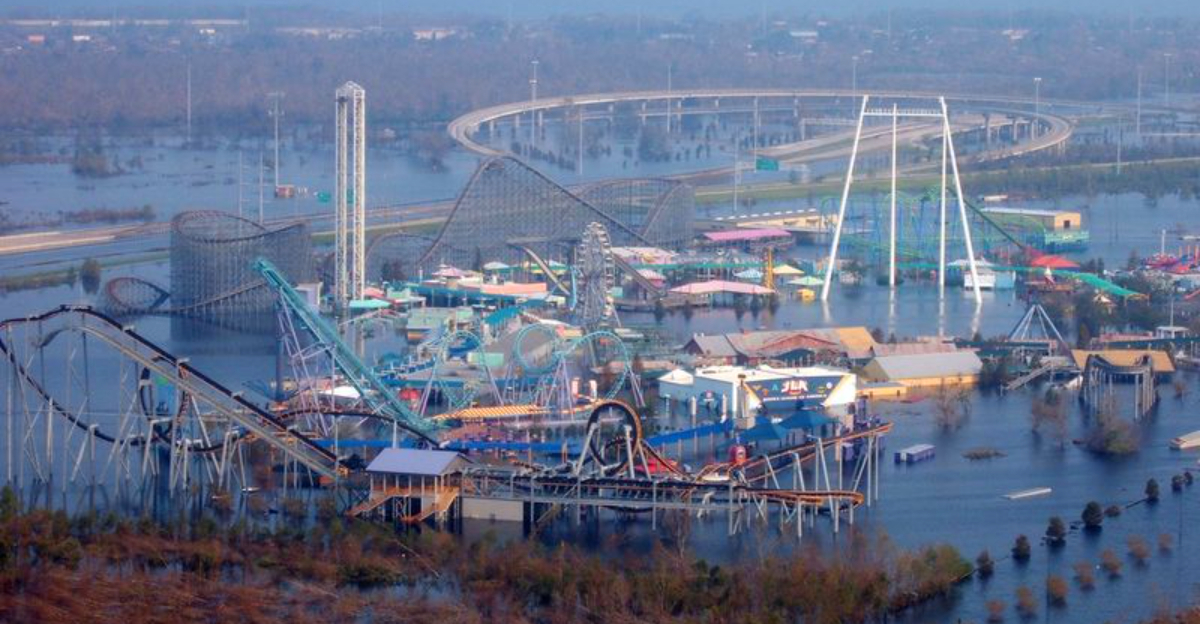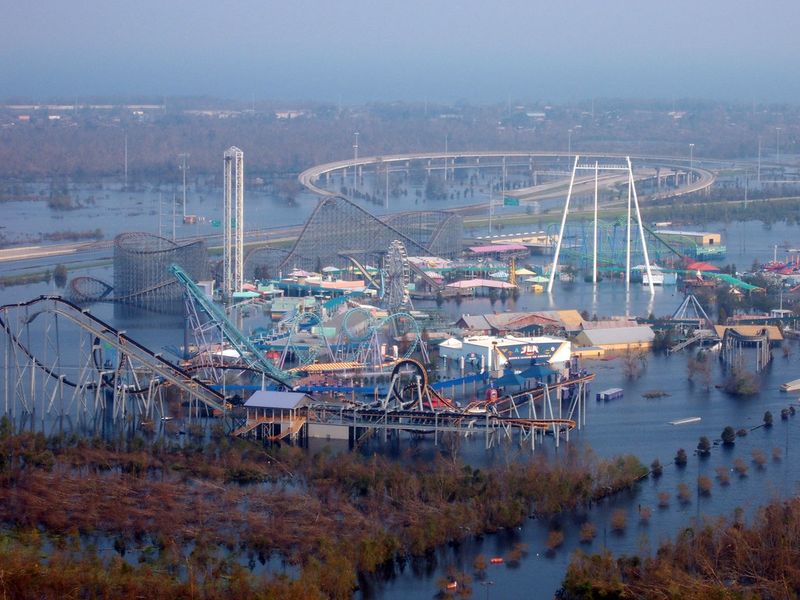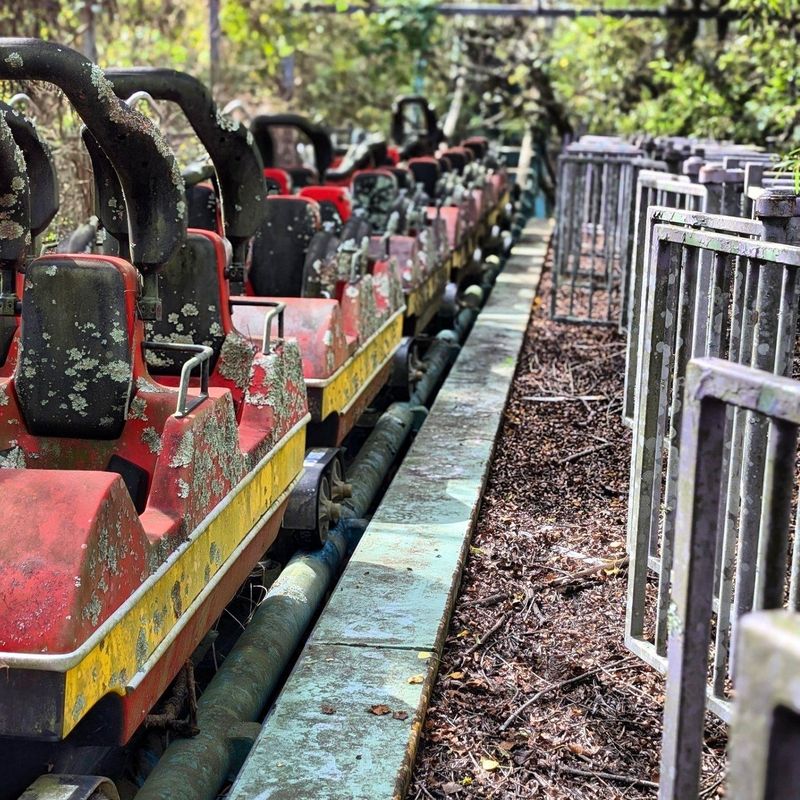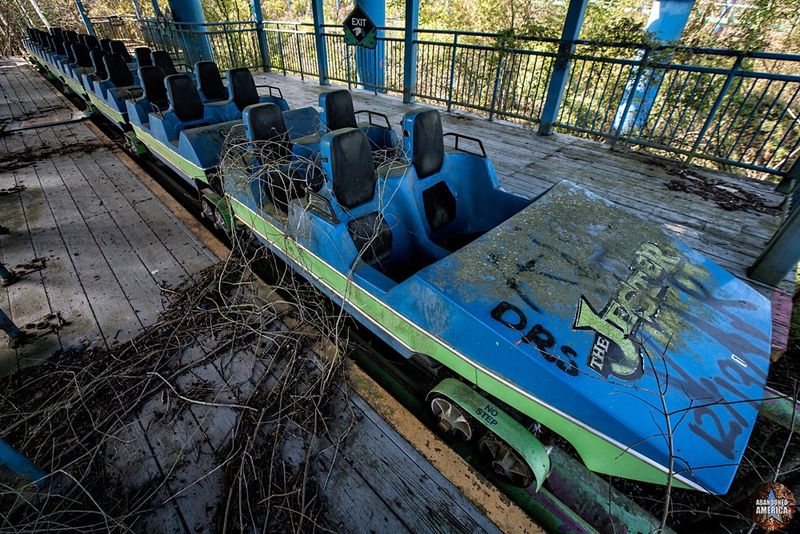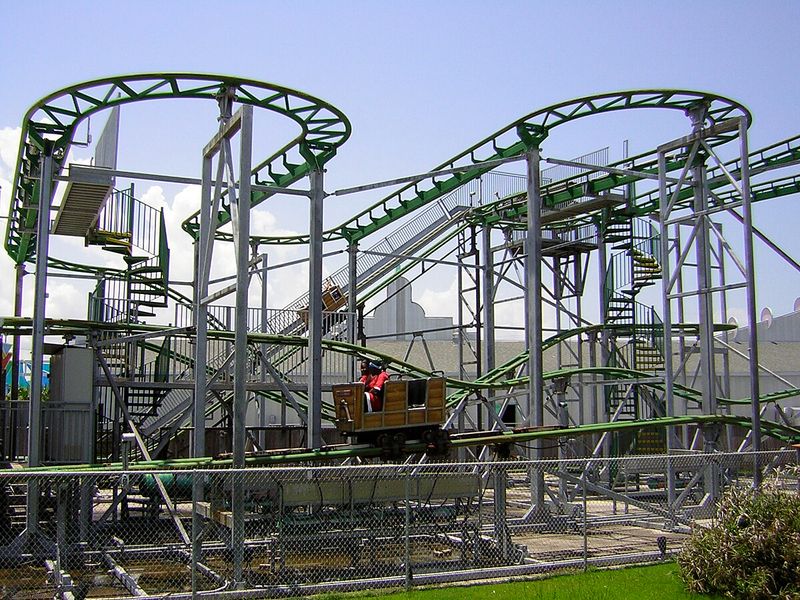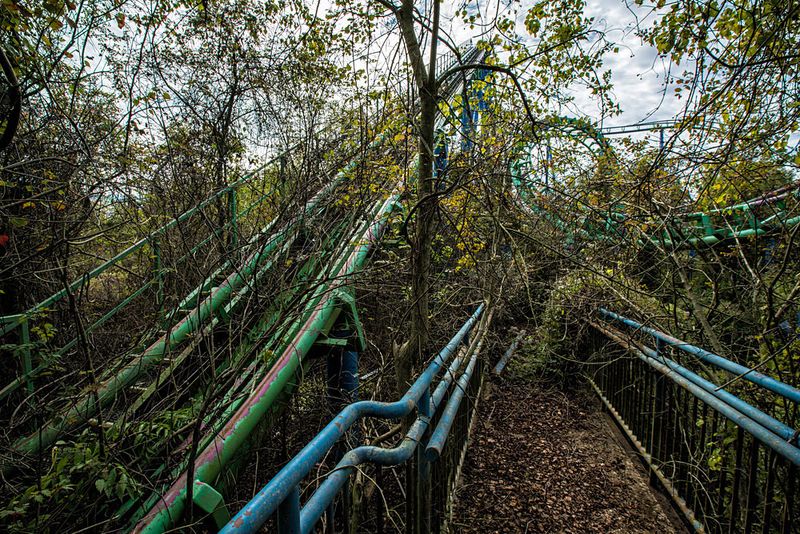In the heart of New Orleans East stands a haunting reminder of dreams washed away—Six Flags New Orleans, once a vibrant amusement park filled with laughter and thrills. Opened in 2000 as Jazzland, it promised to become a cultural landmark celebrating Louisiana’s musical heritage. But Hurricane Katrina had other plans, and by 2005 the park was submerged, abandoned, and left to decay. Today, its rusting roller coasters and overgrown pathways tell a powerful story about ambition, disaster, and the fragile line between joy and loss.
A Grand Opening and Swift Decline
On May 20, 2000, Jazzland burst onto the scene in New Orleans East, designed as a major entertainment destination celebrating the region’s rich musical and cultural traditions. The park featured rides named after jazz legends, Mardi Gras themes, and promised to breathe new economic life into the area.
By 2003, Six Flags acquired the property and rebranded it as Six Flags New Orleans, bringing corporate backing and fresh ambitions. But the park’s operational life proved tragically brief—on August 21, 2005, it closed for what was supposed to be a routine seasonal break.
Just days later, Hurricane Katrina devastated the Gulf Coast, and the park never reopened. What began with fanfare and hope ended in silence and abandonment, a stark reminder of how quickly fortune can reverse.
Mega Zeph: The Wooden Giant
Standing 110 feet tall and roaring at speeds up to 57 mph, Mega Zeph was the park’s tribute to the legendary Zephyr coaster from the old Pontchartrain Beach amusement park. This wooden hybrid was designed to honor New Orleans’ amusement history while delivering modern thrills.
After Katrina flooded the park with up to seven feet of water, Mega Zeph stood silent for nearly two decades. The wooden structure rotted, supports weakened, and nature slowly reclaimed what humans had built.
In February 2025, a significant portion of the track collapsed completely due to advanced decay. The coaster was finally demolished, ending its long watch over the abandoned grounds and closing a chapter on one of the park’s most iconic attractions.
Zydeco Scream: The Boomerang’s Journey
Originally thrilling riders at Barcelona’s Parc de Montjuic from 1990 to 1998, this Vekoma Boomerang coaster crossed the Atlantic to find a new home in Louisiana. Renamed Zydeco Scream after the energetic Creole music style, it offered riders a unique backward-and-forward experience through loops and twists.
The coaster’s relocation symbolized the park’s international ambitions and cultural fusion. But after Katrina, Zydeco Scream became just another rusting monument to abandoned dreams, its tracks covered in graffiti and vegetation.
In December 2024, demolition crews finally dismantled the coaster, removing one more piece of the park’s skeletal remains. Its journey from Spain to Louisiana ended not with screams of excitement, but with the quiet crush of heavy machinery.
The Jester: Backward Thrills Gone Silent
Previously known as The Joker’s Revenge at Six Flags Fiesta Texas, this Vekoma Hurricane coaster arrived in New Orleans in 2003 with a playful new identity. The Jester delivered a distinctive experience—riders faced backward throughout the entire journey, unable to see what was coming next.
This disorienting design made every twist and turn a surprise, creating screams of both terror and delight. The coaster’s colorful paint scheme and jester-themed decorations added to its carnival atmosphere.
After Katrina, The Jester’s tracks became pathways for vines rather than thrill-seekers. The backward-facing seats stared emptily at decaying scenery until demolition in 2024 finally silenced this once-screaming attraction. Its removal marked another step in erasing the park’s physical presence from the Louisiana landscape.
Muskrat Scrambler: The Wild Mouse’s Last Scurry
Built by L&T Systems and opening with the park in 2000, Muskrat Scrambler delivered compact thrills through its signature Wild Mouse design. Sharp turns, sudden drops, and hairpin curves made riders feel perpetually on the edge of flying off the track.
The coaster’s name paid homage to Louisiana’s wetland wildlife, connecting the ride experience to the surrounding swampy environment. Families loved its accessibility—intense enough for excitement but not too extreme for younger riders.
Following the park’s closure, Muskrat Scrambler’s small steel structure weathered storms and vandalism with surprising resilience. But time eventually won, and demolition crews dismantled it in 2024. The little coaster that could scramble no more, leaving only memories and photographs of its zigzagging tracks against Louisiana skies.
Ruins, Urban Exploration and What Remains
For nearly two decades, the abandoned park has captivated urban explorers, photographers, and filmmakers drawn to its post-apocalyptic beauty. Images reveal roller coaster tracks disappearing into thick vegetation, empty queue lines covered in graffiti, and carousel horses frozen mid-gallop, their paint peeling away.
The city of New Orleans owns the property through its development board, but countless redevelopment plans have collapsed under financial and logistical challenges. Fences and security patrols now guard the grounds—trespassing is both illegal and genuinely dangerous due to structural instability and environmental hazards.
Yet the site persists as a powerful symbol of what happens when human ambition meets nature’s fury. The ghost coasters stand as metal monuments to impermanence, reminding us that even our grandest creations can vanish remarkably quickly.
